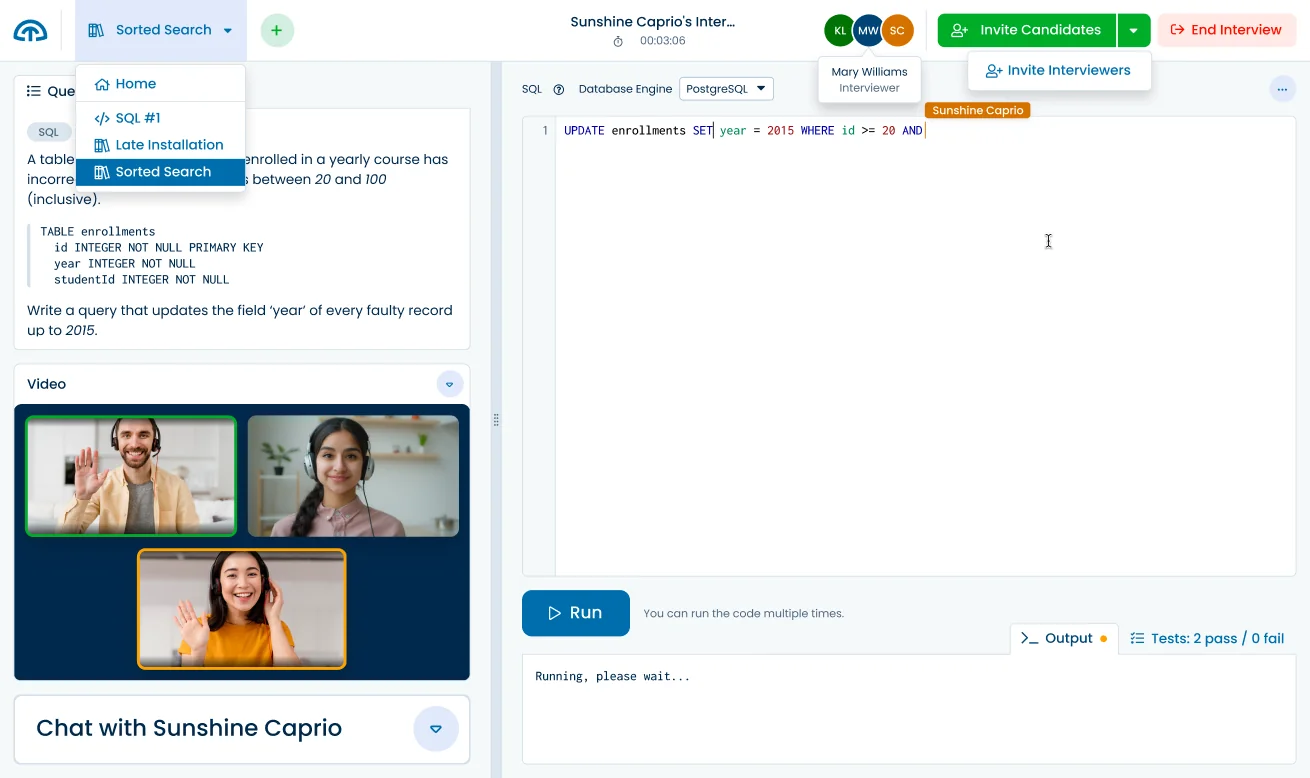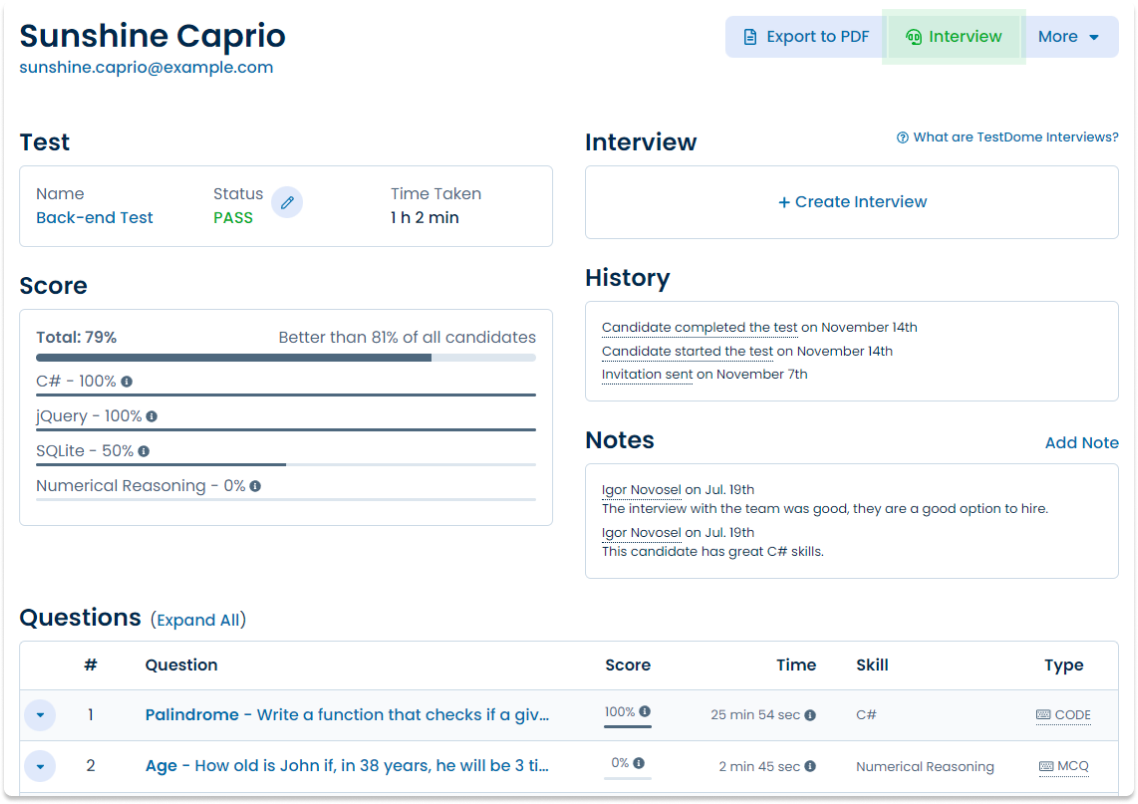React Online Test
For jobseekers
Practice your skills and earn a certificate of achievement when you score in the top 25%.
Take a Practice TestFor companies
Screen real React skills, flag human or AI assistance, and interview the right people.
About the test
The React online test assesses knowledge of building web user interfaces with the React/ReactJS library through a series of live coding questions.
The assessment includes work-sample tasks such as:
- Creating reusable Components.
- Working with Hooks to access state and other React features.
- Handling user events and updating the application based on user actions.
A good React/ReactJS developer should be able to work with the library effectively to create maintainable and accessible web user interfaces.
Sample public questions
A megastore offers three types of discounts. The store needs a way to calculate these discounts quickly.
Implement the PriceCalculator component which should take the total weight of the shopping cart, the total price, and the discount type. It should display the final discounted price based on the discount schemes as the input changes.
The discounts are shown in the promotional video below:
(Open full-size video in a new tab)
For example, when the discount type is weight, the weight of the cart is 12 and the price is 100, the discounted price is 82, as show in the screenshot below:
![]()
An RPG game lets you assign points to the strength and speed attributes of your character. The video below shows how 5 points are supposed to be assigned.
The available points are passed in the totalPoints prop.
Complete the CharacterPoints component so that the UI behaves as shown in the video. When initialized, all points should be available, and both attributes should start at 0.
For jobseekers: get certified
Earn a free certificate by achieving top 25% on the React test with public questions.
Take a Certification TestSample silver certificate
Sunshine Caprio
Java and SQL TestDomeCertificate
For companies: premium questions
Buy TestDome to access premium questions that can't be practiced.
Ready to interview?
Use these and other questions from our library with our
Code Interview Platform.

30 more premium React questions
Reorder, Subscription, Simple Calculator, Shopping List, Product Rating, Tab Strip, Contact Form, Post Comment, Login Form, Product Search, Pet Form, Async Paragraph, Cards Widget, Theme Context Switcher, Player Status, Email Input, Habit Chart, Details, Checkout Form, Toggle Options Visibility, Error Catcher, Tooltip Component, List Wrapper, Click Button, Feedback Form, Value Selector, Range Component, Food Orders, Choose Items, Tally Counter.
Skills and topics tested
- React
- Components
- Event Handling
- React Hooks
- Conditional Rendering
- State Hook
- Reducer Hook
- Managing State
- Content Manipulation
- Hooks
- Effect Hook
- Forms
- Asynchronous Calls
- React Context
- Video
- Data Binding
- Bug Fixing
- Class-based Components
- Error Boundaries
- Portals
- Higher Order Components
For job roles
- JavaScript Developer
- React Developer
- Web Front-End Developer
Sample candidate report
Need it fast? AI-crafted tests for your job role
TestDome generates custom tests tailored to the specific skills you need for your job role.
Sign up now to try it out and see how AI can streamline your hiring process!
What others say
Simple, straight-forward technical testing
TestDome is simple, provides a reasonable (though not extensive) battery of tests to choose from, and doesn't take the candidate an inordinate amount of time. It also simulates working pressure with the time limits.
Jan Opperman, Grindrod Bank
Product reviews
Used by
Solve all your skill testing needs
150+ Pre-made tests
130+ skills
AI-ready assessments
How TestDome works
Choose a pre-made test
or create a custom test
Invite candidates via
email, URL, or your ATS
Candidates take
a test remotely
Sort candidates and
get individual reports



